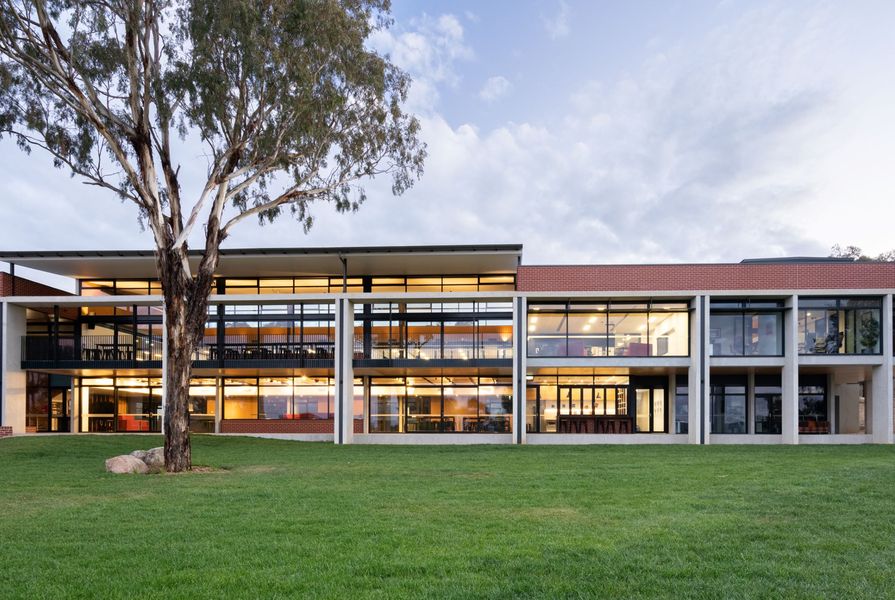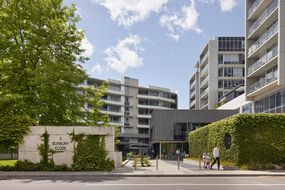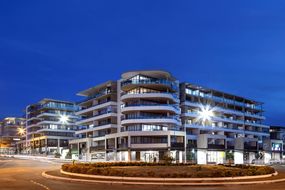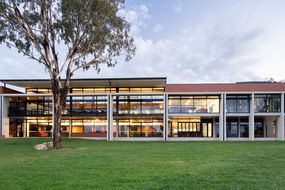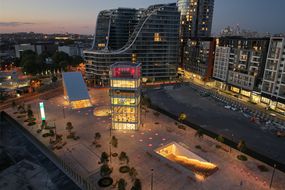One of a series of buildings within our own masterplan for a progressive independent school, the Morison Centre at Radford College employs a highly rational design to deliver a sense of structure that is simultaneously loose and flexible – and a set of multipurpose spaces that can adapt for pedagogies and uses as yet unknown.
Radford College, with over 2,000 students from kindergarten to year 12, is one of the few co-educational independent schools in Australia. Since it was founded in 1983, it has undertaken a continuing programme of development across its north Canberra campus, and our masterplan of 2017 set out ideas for its growth over the next decade. We had completed several buildings within that masterplan before our commission for the Morison Centre, a flexible, sustainable building for both learning and admin, with classrooms, student services, counselling spaces and a new reception for the secondary school. It would need to negotiate a significant level change as well as presenting a formal face to The Commons, an acre of beautiful native landscape and eucalypt lawns onto which the college’s principal buildings face.
The red-brick building is shaped by the broader context of the site: the steep slope creates a retaining wall to the south, and visitors enter from an upper-level terrace, continuing down a flight of stairs to open colonnades around the north and west sides. The central internal corridor is set at a right angle to this stepped route, between classrooms that sometimes dissolve into more open, informal spaces overlooking the campus and bushland to the north. Our efficient, rational plan – and strategy of focusing the budget where it would have the most impact – ensure the building’s longevity. The teaching spaces are highly flexible: connected to each other and to an external balcony with large sliding doors, able to adapt to mirror the school’s progressive pedagogies, and to be reset for new uses if needs change. On the lower level, exposed concrete is warmed by timber joinery and acoustic panels; upstairs, extensive glazing brings in natural light. The building’s orientation, the thermal mass of the concrete, wide overhangs and openable windows all reinforce a passive strategy that minimise its energy use.
The centre offers the school a blank canvas against which to test new teaching methods and enable crossover groupings between different academic years. Its success is in its flexibility to adapt to changing learning scenarios – and, potentially, future changes of use. It also provides a backdrop to the life of the school. The colonnades surrounding the building have become an informal cloister where students can relax between classes, visit their locker, or sit in groups on the stairs in the shade. In the context of the wider campus, it has significantly improved movement around the site, demonstrating our commitment to looking beyond the site boundary to thoroughly network our buildings into their context.

